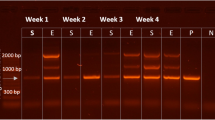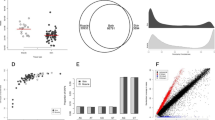Abstract
The choice of sampling method is essential in the development of a population genetic study. This choice influences the type of samples that can be obtained and, therefore, the quality of the extracted DNA. Sampling methods can be classified into invasive, non-invasive, and minimally invasive. This last category is preferred, as it minimizes handling, damage, and degree of disturbance to animals, while still providing enough DNA for genetic studies. Here, we describe a very low cost and easy to manufacture minimally invasive sampler, developed to obtain hair samples from pinnipeds. The sampler was highly effective both at reaching animals and collecting a good number of hairs. We compared the efficiency of hair samples obtained using our device, versus tissue samples collected from dead animals, by counting successful mtDNA amplifications and sequencing. Hair samples amplified more efficiently compared with tissue samples, but sequencing was equally efficient for both sample types. In conclusion, the sampler described is an excellent option to obtain DNA for genetic studies. This minimally invasive technique can also be used to sample hair for other studies, such as estimation of environmental contaminants, measurement of individual hormone levels, or diet determination through the analysis of stable isotopes, among other potential uses.


Similar content being viewed by others
References
Altschul SF, Gish W, Miller W, Myers EW, Lipman DJ (1990) Basic local alignment search tool. J Mol Biol 215:403–410
Anderson H, McCafferty D, Saccheri I, McCluskie A (2006) Non-invasive genetic sampling of the Eurasian otter (Lutra lutra) using hairs. Hystrix It J Mamm 17:65–77. https://doi.org/10.4404/hystrix-17.1-4365
Castellini JM, Rea LD, Lieske CL, Beckmen KB, Fadely BS, Maniscalco JM, O’Hara TM (2012) Mercury concentrations in hair from neonatal and juvenile Steller sea lions (Eumetopias jubatus): implications based on age and region in this northern Pacific marine sentinel piscivore. EcoHealth 9:267–277. https://doi.org/10.1007/s10393-012-0784-4
Cattet M, Stenhouse GB, Janz DM, Kapronczai L, Anne Erlenbach J, Jansen HT, Nelson OL, Robbins CT, Boulanger J (2017) The quantification of reproductive hormones in the hair of captive adult brown bears and their application as indicators of sex and reproductive state. Conserv Physiol 5:cox032. https://doi.org/10.1093/conphys/cox032
Caudron AK, Negro SS, Muller CG, Boren LJ, Gemmell NJ (2007) Hair sampling and genotyping from hair follicles: a minimally-invasive alternative for genetics studies in small, mobile pinnipeds and other mammals. Mar Mam Sci 23:184–192. https://doi.org/10.1111/j.1748-7692.2006.00084.x
Cerling TE, Wittemyer G, Rasmussen HB, Vollrath F, Cerling CE, Robinson TJ, Douglas-Hamilton I (2006) Stable isotopes in elephant hair document migration patterns and diet changes. PNAS 103:371–373. https://doi.org/10.1073/pnas.0509606102
Clevenger A, Sawaya M (2010) Piloting a non-invasive genetic sampling method for evaluating population-level benefits of wildlife crossing structures. Ecol Soc 15:7
Collins CJ, Chilvers BL, Osborne A, Taylor M, Robertson BC (2017) Unique and isolated: population structure has implications for management of the endangered New Zealand sea lion. Conserv Genet 18:1177–1189. https://doi.org/10.1007/s10592-017-0969-z
Constable JL, Ashley MV, Goodall J, Pusey AE (2001) Noninvasive paternity assignment in Gombe chimpanzees. Mol Ecol 10:1279–1300
Darimont CT, Reimchen TE (2002) Intra-hair stable isotope analysis implies seasonal shift to salmon in gray wolf diet. Can J Zool 95:663–671. https://doi.org/10.1139/cjz-2016-0258
D'Havé H, Covaci A, Scheirs J, Schepens P, Verhagen R, De Coen W (2005) Hair as an indicator of endogenous tissue levels of brominated flame retardants in mammals. Environ Sci Technol 39:6016–6020
Emami-Khoyi A, Paterson AM, Hartley DA, Boren LJ, Cruickshank RH, Ross JG, Murphy EC, Else T (2018) Mitogenomics data reveal effective population size, historical bottlenecks, and the effects of hunting on New Zealand fur seals (Arctocephalus forsteri). Mito Mitochondrial DNA A DNA Mapp Seq Anal 29:567–580. https://doi.org/10.1080/24701394.2017.1325478
Excoffier L, Lischer HE (2010) Arlequin suite ver 3.5: a new series of programs to perform population genetics analyses under Linux and Windows. Mol Ecol Resour 10:564–567. https://doi.org/10.1111/j.1755-0998.2010.02847.x
Feijoó M, Lessa EP, Loizaga de Castro R, Crespo EA (2011) Mitochondrial and microsatellite assessment of population structure of south American sea lion (Otaria flavescens) in the southwestern Atlantic Ocean. Mar Biol 158:1857–1867. https://doi.org/10.1007/s00227-011-1697-4
Field D, Chemnick L, Robbins M, Garner K, Ryder O (1998) Paternity determination in captive lowland gorillas and orangutans and wild mountain gorillas by microsatellite analysis. Primates 39:199–209. https://doi.org/10.1007/BF02557731
Frantz AC, Schaul M, Pope LC, Fack F, Schley L, Muller CP, Roper TJ (2004) Estimating population size by genotyping remotely plucked hair: the Eurasian badger. J Appl Ecol 41:985–995. https://doi.org/10.1111/j.0021-8901.2004.00951.x
Gardner B, Royle JA, Wegan MT, Rainbolt RE, Curtis PD (2010) Estimating black bear density using DNA data from hair snares. J Wildl Manag 74:318–325. https://doi.org/10.2193/2009-101
Gemmell NJ, Majluf P (1997) Projectile biopsy sampling of fur seals. Mar Mam Sci 13:512–516. https://doi.org/10.1111/j.1748-7692.1997.tb00661.x
Gentry RL, Holt JR (1982) Equipment and techniques for handling northern fur seals. NOAA technical report NMFS SSRF-United States. National Marine Fisheries Service, USA
Goossens B, Waits LP, Taberlet P (1998) Plucked hair samples as a source of DNA: reliability of dinucleotide microsatellite genotyping. Mol Ecol 7:1237–1241
Goossens B, Chikhi L, Jalil MF, Ancrenaz M, lackman-Ancrenaz I, Mohamed M, Andau P, Bruford MW (2005) Patterns of genetic diversity and migration in increasingly fragmented and declining orangutan (Pongo pygmaeus) populations from Sabah, Malaysia. Mol Ecol 14:441–456
Grandi MF, de Castro RL, Terán E, Santos MR, Bailliet G, Crespo EA (2018) Is recolonization pattern related to female philopatry? An insight into a colonially breeding mammal. Mamm Biol 89:21–29. https://doi.org/10.1016/j.mambio.2017.12.002
Harris H (1966) C. Genetics of man enzyme polymorphisms in man. Proc R Soc Lond B 164:298–310
Herman DP, Burrows DG, Wade PR, Durban JW, Matkin CO, LeDuc RG, Barrett-Lennard LG, Krahn MM (2005) Feeding ecology of eastern North Pacific killer whales Orcinus orca from fatty acid, stable isotope, and organochlorine analyses of blubber biopsies. MEPS 302:275–291. https://doi.org/10.3354/meps302275
Hoffman JI (2011) Gene discovery in the Antarctic fur seal (Arctocephalus gazella) skin transcriptome. Mol Ecol Resour 11:703–710. https://doi.org/10.1111/j.1755-0998.2011.02999.x
Hoffman JI, Amos W (2005) Microsatellite genotyping errors: detection approaches, common sources and consequences for paternal exclusion, vol 14, Mol Ecol, pp 599–612
Hoffman JI, Boyd IL, Amos W (2003) Male reproductive strategy and the importance of maternal status in the Antarctic fur seal Arctocephalus gazella. Evolution 57:1917–1930
Huck M, Frantz AC, Dawson DA, Burke T, Roper TJ (2008) Low genetic variability, female-biased dispersal and high movement rates in an urban population of Eurasian badgers Meles meles. J Anim Ecol 77:905–915
Kim GB, Lee JS, Tanabe S, Iwata H, Tatsukawa R, Shimazaki K (1996) Specific accumulation and distribution of butyltin compounds in various organs and tissues of the Steller sea lion (Eumetopias jubatus): comparison with organochlorine accumulation pattern. Mar Pollut Bull 32:558–563. https://doi.org/10.1016/0025-326X(96)84576-0
Krützen M, Barré LM, Möller LM, Heithaus MR, Simms C, Sherwin WB (2002) A biopsy system for small cetaceans: darting success and wound healing in Tursiops spp. Mar Mam Sci 18:863–878. https://doi.org/10.1111/j.1748-7692.2002.tb01078.x
Lamont MM, Vida JT, Harvey JT, Jeffries S, Brown R, Huber HH, Delong R, Thomas WK (1996) Genetic substructure of the Pacific harbor seal (Phoca vitulina richardsi) off Washington, Oregon, and California. Mar Mam Sci 12:402–413. https://doi.org/10.1111/j.1748-7692.1996.tb00592.x
Leberg PL (1996) Applications of allozyme electrophoresis in conservation biology. In: Smith TB, Wayne RK (eds) Molecular genetic approaches in conservation. Oxford University, Oxford, pp 87–103
Lewontin RC (1991) Twenty-five years ago in genetics: electrophoresis in the development of evolutionary genetics: milestone or millstone? Genetics 128:657–662
McLean CM, Koller CE, Rodger JC, MacFarlane GR (2009) Mammalian hair as an accumulative bioindicator of metal bioavailability in Australian terrestrial environments. Sci Total Environ 407:3588–3596. https://doi.org/10.1016/j.scitotenv.2009.01.038
Murphy RW, Sites JW Jr, Buth DG, Haufler CH (1996) Proteins I: isozyme electrophoresis. Molecular systematics. In: Hillis DM, Moritz C, Mable BK (eds) , 2nd edn. Sinauer Associates, Inc., Massachusett, pp 51–120
Nardelli M, Túnez JI, Centrón D, Cassini MH (2011) Técnicas de muestreo no invasivas aplicadas al estudio genético de mamíferos. Interciencia 36:404–411
Pilgrim KL, McKelvey KS, Riddle AE, Schwartz MK (2005) Felid sex identification based on noninvasive genetic samples. Mol Ecol 5:60–61. https://doi.org/10.1111/j.1471-8286.2004.00831.x
Reed JZ, Tollit DJ, Thompson PM, Amos W (1997) Molecular scatology: the use of molecular genetic analysis to assign species, sex and individual identity to seal faeces. Mol Ecol 6:225–234
Ribas C, Cunha HA, Damasceno G, Magnusson WE, Solé-Cava A, Mourão G (2016) More than meets the eye: kinship and social organization in giant otters (Pteronura brasiliensis). Behav Ecol Sociobiol 70:61–72. https://doi.org/10.1007/s00265-015-2025-7
Ripley B, Venables B, Bates DM, Hornik K, Gebhardt A, Firth D, Ripley MB (2013) Package ‘mass’. Cran R. http://www.stats.ox.ac.uk/pub/MASS4/
Sambrook J, Fritsch EF, Maniatis T (1989) Molecular Cloning: A Laboratory Manual. Cold Spring Harbor Press, Cold Spring Harbor, New York
Stovall WR, Taylor HR, Black M, Grosser S, Rutherford K, Gemmell NJ (2018) Genetic sex assignment in wild populations using genotyping-by-sequencing data: a statistical threshold approach. Mol Ecol Resour 18:179–190. https://doi.org/10.1111/1755-0998.12767
Swanson BJ, Kelly BP, Maddox CK, Moran JR (2006) Shed skin as a source of DNA for genotyping seals. Mol Ecol 6:1006–1009. https://doi.org/10.1111/j.1471-8286.2006.01473.x
Taberlet P, Bouvet J (1992) Bear conservation genetics. Nature 358:197
Taberlet P, Luikart G (1999) Non-invasive genetic sampling and individual identification. Biol J Linn Soc 68:41–55. https://doi.org/10.1006/bijl.1999.0329
Taberlet P, Camarra JJ, Griffin S, Uhres E, Hanotte O, Waits LP, Dubois-Paganon C, Burke T, Bouvet J (1997) Noninvasive genetic tracking of the endangered Pyrenean brown bear population. Mol Ecol 6:869–876
Taberlet P, Waits LP, Luikart G (1999) Noninvasive genetic sampling: look before you leap. Trends Ecol Evol 14:323–327
Túnez JI, Cappozzo HL, Nardelli M, Cassini MH (2010) Population genetic structure and historical population dynamics of the south American sea lion, Otaria flavescens, in north-central Patagonia. Genetica 138:831–841. https://doi.org/10.1007/s10709-010-9466-8
Vigilant L (1999) An evaluation of techniques for the extraction and amplification of DNA from naturally shed hairs. Biol Chem 380:1329–1331. https://doi.org/10.1515/BC.1999.169
Williams BW, Etter DR, Linden DW, Millenbah KF, Winterstein SR, Scribner KT (2009) Noninvasive hair sampling and genetic tagging of co-distributed fishers and American martens. J Wildl Manag 73:26–34. https://doi.org/10.2193/2007-429
Zar JH (1999) Biostatistical analysis. Pearson Education, India
Zhang B, Li M, Zhang Z, Goossens B, Zhu L, Zhang S, Hu J, Bruford MW, Wei F (2007) Genetic viability and population history of the giant panda, putting an end to the “evolutionary dead end”? Mol Biol Evol 24:1801–1810. https://doi.org/10.1093/molbev/msm099
Acknowledgements
We thank Guillermo H. Cassini for his help with the statistical analysis, Connie Ranieri for her help in developing the idea, and Lida Pimper for her help in logistic and permits request. We also thank the Park Rangers of Monte León National Park for their collaboration and hospitality, the Consejo Agrario de Santa Cruz for the facilities they gave us to work, and the CADACE members who treated us very well during our stay. Finally, we would like to thank Shirley Espert and Luciano Valenzuela for their help with language corrections and to the three anonymous reviewers who help us to improve the manuscript. This study was supported by grants and fellowships from National Geographic Society, Universidad Nacional de Luján, and CONICET.
Funding
This study was funded by a National Geographic Society Young Explorer grant (number 10000-16).
Author information
Authors and Affiliations
Corresponding author
Ethics declarations
Conflict of interest
The authors declare that they have no conflict of interest.
Ethical approval
All applicable international, national and/or institutional guidelines for sampling, care, and experimental use of organisms for the study have been followed, and all necessary approvals have been obtained (detailed below). Asociación Parques Nacionales (APN), Research Permission 114-CPA 2017; Dirección de Fauna Silvestre Provincia de Santa Cruz, Disposición No. 01/2017.
Additional information
Publisher’s note
Springer Nature remains neutral with regard to jurisdictional claims in published maps and institutional affiliations.
Communicated by: Cino Pertoldi
Rights and permissions
About this article
Cite this article
Peralta, D.M., Ibañez, E.A., Lucero, S. et al. A new minimally invasive and inexpensive sampling method for genetic studies in pinnipeds. Mamm Res 65, 11–18 (2020). https://doi.org/10.1007/s13364-019-00453-2
Received:
Accepted:
Published:
Issue Date:
DOI: https://doi.org/10.1007/s13364-019-00453-2




